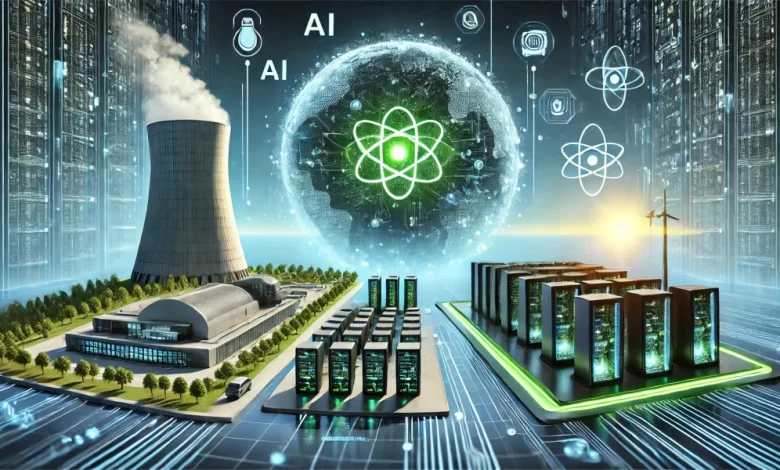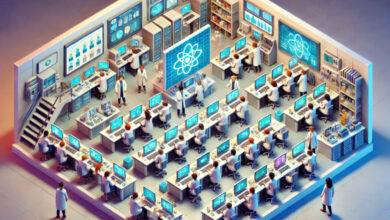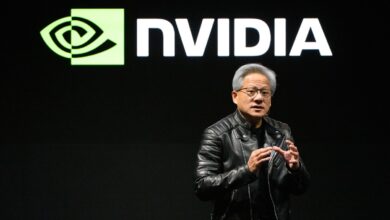AI’s Growing Power Needs: Tech Industry’s Move Towards Nuclear Power

Artificial intelligence (AI) is no longer a futuristic concept, but a crucial part of our daily lives. The applications of AI are vast and transformative, from virtual assistants that help us manage our schedules to advanced algorithms that predict market trends and diagnose diseases. However, these technological advances come with hidden costs in the form of enormous energy demand. As AI systems increase in complexity and usage, their computational requirements have increased, resulting in a significant increase in energy consumption.
The need for AI services is driving the construction of more data centers and the expansion of existing data centers, with each center housing thousands of servers that operate 24/7. These data centers are essential for AI, but consume a lot of energy. Consuming data centers worldwide 1-2% of total power, but this percentage is likely to increase 3-4% by the end of the decade. Increased demand, especially in the US and Europe, is expected to lead to significant increases in electricity consumption, a growth pattern not seen in decades. Along the way, CO2 emissions from data centers could be greater than in the year 2030.
This increase in energy demand poses a significant challenge. Traditional energy sources, mainly fossil fuels, are harmful to the environment and need to be more robust to meet these needs in a sustainable way. Renewable energy sources such as wind and solar energy offer cleaner alternatives, but suffer from scalability and reliability issues. Amid these challenges, the technology industry is exploring nuclear energy as a potential solution to its growing energy needs.
Trends and challenges in AI power consumption
The rapid advancement of AI has led to an exponential increase in computing requirements. Training complex AI models, especially deep learning models, requires significant computing power. For example, training a large language model like GPT-4 involves processing massive amounts of data through multiple layers of neural networks. This process can take weeks and consume enormous amounts of energy.
The environmental impact of data centers is significant. These facilities, which house the servers and infrastructure needed to run AI applications, are known for their high energy consumption. They operate 24/7 and consume electricity for computer processes and cooling systems to prevent overheating. In 2022, data centers consumed approx 2.5% of the total electricity used in the United States, approximately 130 terawatt hours (TWh). This consumption is expected to increase significantly and possibly triple to 7.5% (about 390 TWh) in 2030. Global electricity consumption from data centers could almost double from 460 TWh in 2022 to 1,000 TWh in 2026.
The need for sustainable solutions is clear. As AI applications expand, the demand for energy-efficient and environmentally friendly energy sources becomes more urgent. Based on current trends, AI energy consumption could become a serious environmental problem. If we don’t take action, it could worsen climate change and put pressure on our natural resources.
Current energy sources and limitations
The technology industry’s dependence on traditional energy sources poses significant environmental problems. Fossil fuels, including coal, natural gas and oil, remain the primary energy sources for many data centers. Although these sources are reliable and sufficient to meet energy demand, their impact on the environment is harmful. The combustion of fossil fuels releases large amounts of carbon dioxide and other greenhouse gases into the atmosphere, contributing to global warming and air pollution.
Renewable energy sources, such as solar, wind and hydropower, offer a cleaner alternative. These sources generate energy without emitting greenhouse gases, reducing the carbon footprint of data centers. However, they face several limitations. Solar and wind energy are intermittent and dependent on weather conditions and time of day, making them less reliable for the constant energy needs of data centers. Hydropower, while more consistent, is geographically limited and cannot be used universally.
These challenges highlight the need for a more reliable and scalable energy source. While renewable energy is a fundamental part of the solution, it alone cannot meet AI’s rapidly growing energy needs. This brings us to the consideration of nuclear energy as a possible solution.
Nuclear energy as a sustainable solution
Nuclear energy offers a compelling solution to the energy needs of the technology industry. It provides a reliable energy source with high density and minimal CO2 emissions. Unlike fossil fuels, nuclear reactors do not emit carbon dioxide during operation, making them an environmentally friendly alternative.
The basic principle of nuclear energy involves using the energy released during nuclear reactions, usually through nuclear fission. In a fission reactionthe nucleus of an atom splits into smaller parts, releasing a significant amount of energy. This process is very efficient, with a single uranium fuel pellet producing the same amount of energy as one ton of coal 120 gallons of crude oil.
Advanced nuclear reactors, such as Small modular reactors (SMRs)represent the next generation of nuclear technology. SMRs are smaller, safer and more flexible than traditional reactors. They can be built incrementally and are designed to be inherently safe, with systems that automatically shut down in the event of a failure. These features make SMRs a viable option for powering data centers.
Despite these advantages, nuclear energy faces several challenges. Public perception is a major obstacle. High-profile nuclear accidents, such as Chernobyl and Fukushima, have left a lasting fear and skepticism about nuclear energy. Addressing these issues requires transparent communication about safety measures and progress in nuclear technology.
Regulatory frameworks can also hinder nuclear energy adoption. The development and approval process for nuclear projects is lengthy and complex and involves strict safety and environmental standards. Streamlining these regulations while maintaining high safety standards is essential for the wider adoption of nuclear energy.
Tech giants moving towards nuclear energy
Several technology giants are leading the way in exploring nuclear power for their energy needs. Google has committed to using 100% renewable energy for its data centers. Although the company relies primarily on wind and solar energy, Google recognizes the limitations of these sources and is actively investing in advanced clean energy technologies, including nuclear power, to ensure a stable and sustainable energy supply. In association with Microsoft and NucorGoogle is working to develop new business models and aggregate demand for advanced clean electricity technologies, such as advanced nuclear power, next-generation geothermal energy and long-term energy storage. This initiative aims to accelerate the deployment of unique and early commercial projects to support carbon-free energy generation and help meet the growing demand for electricity, powered by AI and other technologies.
Microsoft has taken a more direct approach to integrating nuclear energy into its operations. The company collaborates with TerraPower, a nuclear innovation company, to explore the use of advanced nuclear reactors for its data centers. This partnership aims to leverage next-generation nuclear technology to create a reliable and sustainable energy source for Microsoft’s growing AI infrastructure.
Amazon Web Services (AWS) is exploring nuclear energy to diversify its energy portfolio and ensure a reliable power supply for its data centers. AWS has invested in SMRs and other advanced nuclear technologies to power its operations with 100% renewable energy by 2025 and achieve carbon neutrality by 2040. A notable example of this commitment is AWS’s purchase of a 960-megawatt data center campus from Talen Energy. , which is powered directly by the adjacent Susquehanna Steam Electric Station, a nuclear power plant in Pennsylvania.
IBM is another technology giant actively involved in nuclear energy. IBM Research is investigating the possibilities of using nuclear fusion as a long-term energy solution. Although still experimental, nuclear fusion promises a virtually unlimited and clean energy source, in line with IBM’s commitment to sustainability and innovation.
Challenges and considerations
Despite its significant potential, nuclear energy faces several challenges. Public perception remains an obstacle as safety fears arise from accidents such as Chernobyl and Fukushima. Addressing these issues requires transparent communication and education about modern safety protocols and reactor developments to build public trust.
Furthermore, the regulatory landscape for nuclear energy is complex and lengthy, often delaying its adoption. Streamlining regulations while maintaining safety standards is essential. Governments and regulators must work together to create an environment conducive to nuclear innovation.
Furthermore, the high initial costs of building nuclear power plants can be overwhelming. However, these can be offset by long-term benefits such as reliable, cheap energy. Investments and government support are essential, and innovative financing models and public-private partnerships can help spread costs and risks.
Finally, the treatment and disposal of nuclear waste is another crucial issue. Innovations in waste management, such as deep geological repositories and advanced recycling methods, are necessary for long-term viability. Safe and sustainable waste management is essential for public acceptance and environmental protection.
It comes down to
In conclusion, the energy demands of data centers are rapidly increasing as AI expands. Nuclear energy offers a promising solution due to its efficiency and low CO2 emissions. While challenges such as public perception, regulatory hurdles and waste management need to be addressed, companies like Google, Microsoft, AWS and IBM are already on their way to benefiting from nuclear energy.
The technology industry can sustainably meet its future energy needs by embracing nuclear energy innovations and overcoming these obstacles through clear communication and strategic investments. This shift supports technological growth and contributes to a cleaner, more sustainable world.






